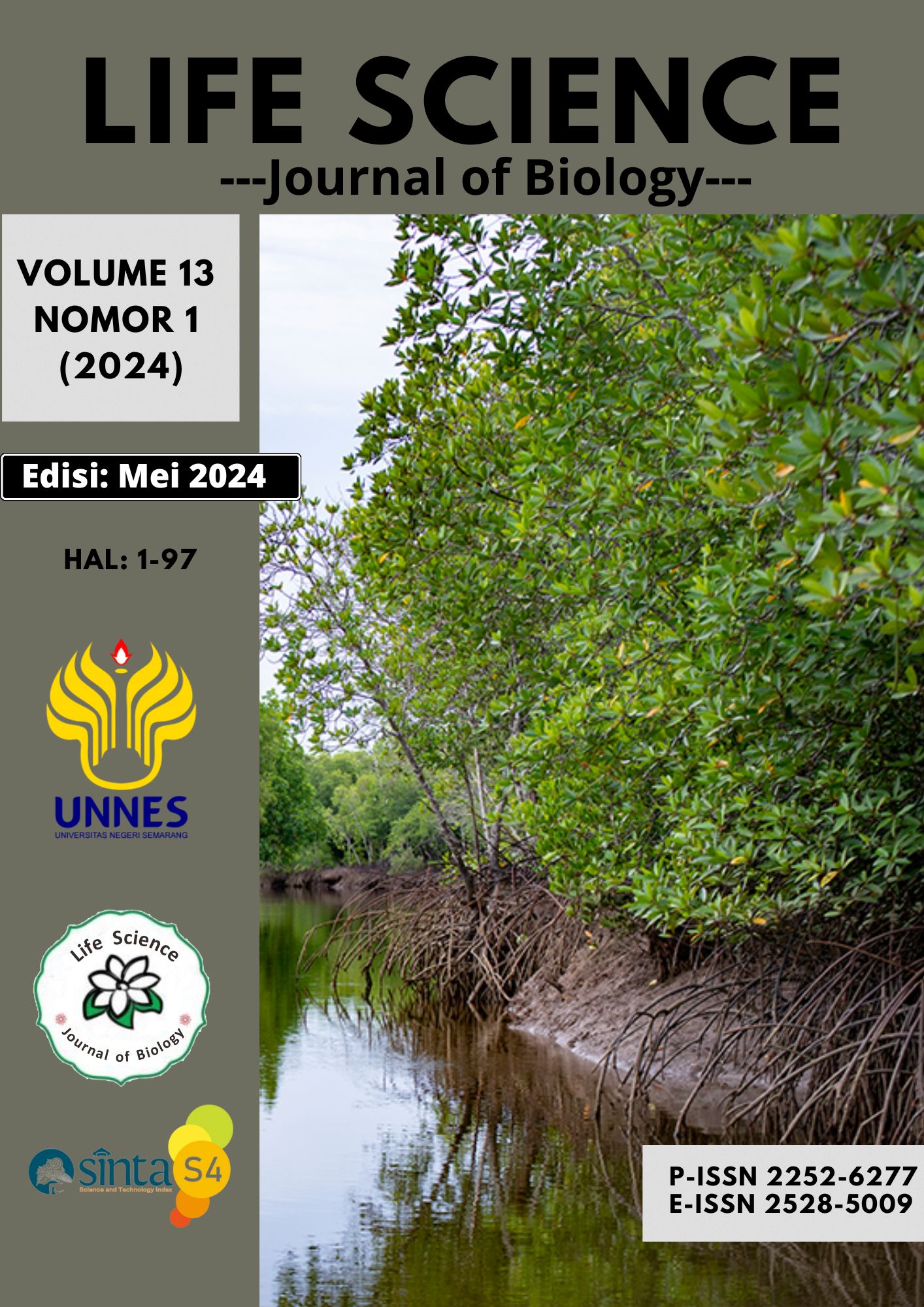Identifikasi Bakteri Asam Laktat Berdasarkan Kemiripan Fenotipik dari Kulit Nanas Varietas Queen di Kalimantan Barat yang Difermentasi secara Alami
Main Article Content
Abstract
Queen pineapple, a variety of pineapple, is a fruit containing sugars that can be utilized as a source of nutrition by lactic acid bacteria. This study aims to identify the types of lactic acid bacteria from naturally fermented queen pineapple peels, identified based on phenotypic characteristics. Bacteria isolation was performed using the pour plate method with serial dilution up to 10^-6 using MRSA medium (de Man-Rogosa-Sharpe Agar). Characterization of lactic acid bacteria includes morphological, biochemical, and physiological characteristics. Bacterial identification refers to Bergey’s Manual of Determinative Bacteriology. The isolation and identification results of lactic acid bacteria obtained 6 isolates, namely, BAL1, BAL2, BAL3, BAL4, BAL5, and BAL6. Simple matching coefficient UPGMA analysis showed that BAL1, BAL2, and BAL4 had a phenotypic similarity of 83.8% to Lactobacillus fermentum; BAL3 and BAL5 had a phenotypic similarity of 90.9% to L. plantarum; and BAL6 had a phenotypic similarity of 87.9% to L. brevis. Jaccard coefficient UPGMA analysis indicated that BAL1, BAL2, and BAL4 grouped with L. fermentum with a phenotypic similarity value of 68.1%; BAL3 and BAL5 had a phenotypic similarity of 83% to L. plantarum, and BAL6 had a phenotypic similarity of 73.3% to L. brevis. This suggests that isolates BAL1, BAL2, and BAL4 are suspected members of L. fermentum species, BAL3 and BAL5 are suspected members of L. plantarum species, and BAL6 is suspected as a member of L. brevis species.


